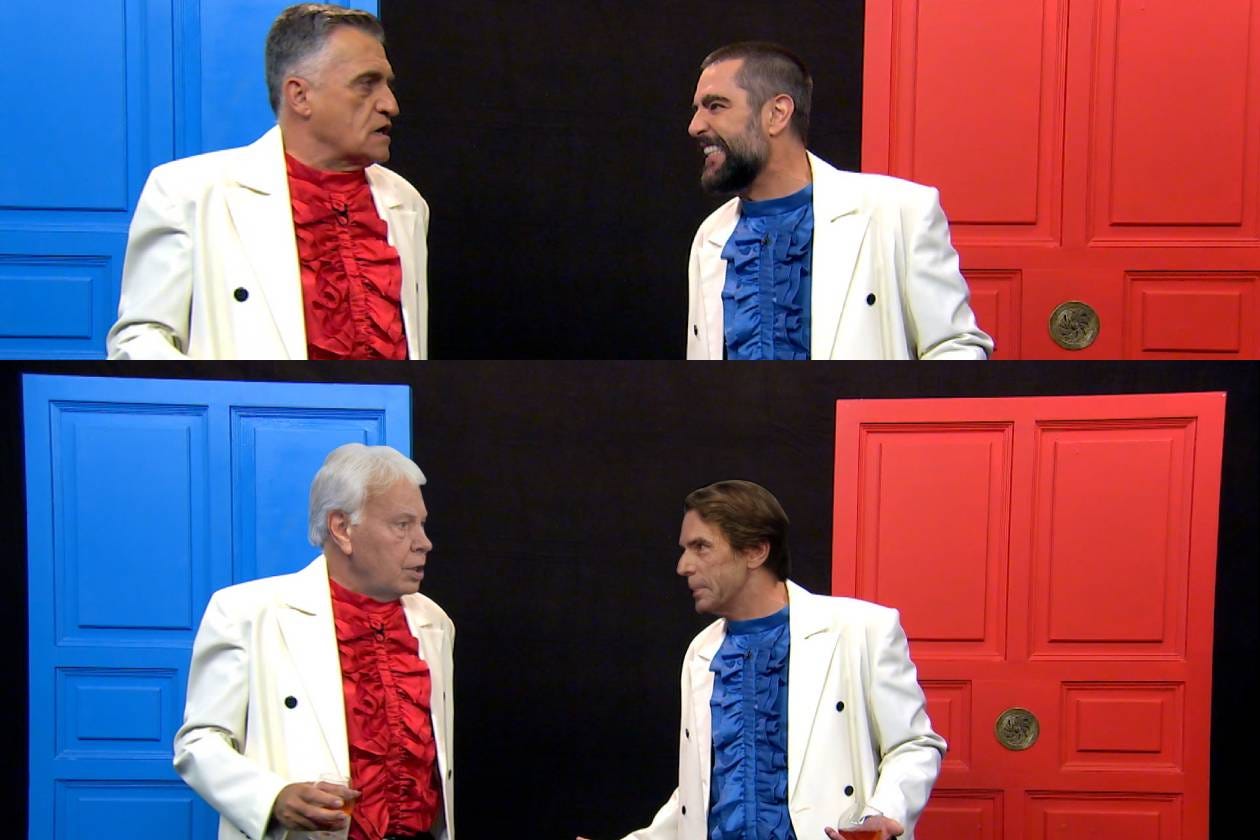Trendwatch ’24: Banijay execs talk pushing boundaries with AI
Published in Realscreen Magazine January 2024
Artificial intelligence is for some a tantalizing opportunity to take creativity to new heights, and for others, a technology to keep a careful eye on. As its use accelerates within the content creation process, producers may find that both things can be true. Here, veteran unscripted media executive Fred Grinstein looks at how execs within the Banijay roster of labels are exploring the possibilities in working with AI, and how it may impact the industry at large in the year ahead.
Even as artificial intelligence became a flashpoint for skirmishes within the entertainment industry and elsewhere throughout 2023, the adage that “AI won’t replace you, but someone using AI will” began to settle in for many this past year. In the face of this seeming inevitability, some of these former opponents are now tentatively setting aside their doomsday fears and instead wondering if they should take this new hoverboard for a ride.
Of course, “new” is a bit of a misnomer. In the unscripted production sector, networks and production companies have been using AI in myriad ways for some time now, for tasks ranging from dubbing to transcription, editing to voice cloning. (The latter technique caused some controversy for filmmakerMorgan Neville when he used it to have the late Anthony Bourdain “narrate” scenes from Roadrunner, his documentary about the celebrated chef.) But, given the rapid advances in generative AI (GAI), the tech is bound to have an even greater impact on creative going forward, as production companies look for ways to marry its potential for innovation with the all-important Great Idea.
Of the major production groups, Paris-headquartered Banijay was the first to announce its AI intentions with the establishment of the AI Creative Fund, which was billed as a “group-level investment” that would supply development funding to concepts from “visionaries within Banijay who are developing ideas using tech, and those that are keen to explore the endless possibilities in the world of this new technology.”
“[It] aligns with our broader strategy to diversify, push boundaries, and stay ahead in the ever evolving television landscape,” says Banijay’s chief content officer James Townley (pictured left). “Reality shows could embrace this tech easily, as we are always trying to reflect those ‘mirror moments’ for the audience [and AI is now] becoming such a relatable day-to-day experience. Game shows also feel ripe, but I really don’t think we are limited by genre… We’re excited to see what comes next, and how this benefits the non-scripted community as a whole.”
From Post Fixes to Deepfakes
Randy Counsman, SVP of development at U.S.-based Banijay label Stephen David Entertainment, says he’s “really bullish” about integrating AI into the production process. The utility sells itself, he says, whether it’s using Adobe Photoshop’s Generative Fill on development decks, instantly wiping out unwanted powerlines in the background of a Civil War–era pitch reel, or employing AI editing software that automatically transcribes and accelerates stringing out a paper cut.
Beyond such utilitarian benefits, Counsman also points to the creative possibilities of the tech. Citing how the advent of HD led to such groundbreaking titles as World War II in HD — the History Channel event series from Lou Reda Productions that up-rezzed recently discovered war footage for a new generation of HD screens — he says that he is excited by the opportunities to use AI within the historical programming space, specifically regarding the rejuvenation of archival content.
“Even more exciting to me is the potential for live content… live face replacement, VFX layers that happen live,” Counsman (pictured ) adds, saying that such an approach is “ultimately experimenting with the realtime feedback loop between audience and content.”
Madrid-based VFX artists Alejandro Perez and Francisco “Paco” Fernandez have been immersed in deepfake technology since 2017, producing AI-enhanced content for Spanish film and TV, commercials and comedy skits (including the deepfaked versions of former Spanish prime ministers Felipe González and José María Aznar, as seen above, for la Sexta’s El Intermedio). While the term “deepfake” rings alarm bells for many AI newcomers, Perez and Fernandez believe that doomsday worries about deepfake-empowered misinformation are overblown, and that audiences exposed to this content quickly develop a new kind of media literacy.
Like Counsman, the duo also draws attention to AI’s value as a utility player, such as fixing those pesky blurs producers have to put over uncleared product logos or unreleased people in the background of shots. The magic wand of deepfake video can replace those blurs with newly animated “real” images that are pre-cleared — because they don’t even exist.
Transparency Matters
Still, it’s worth noting that many are calling for the industry to proceed with caution when it comes to AI. In November, the Archival Producers Alliance (APA) — a new advocacy group founded by Jennifer Petrucelli and Rachel Antell of Sub-Basement Archival and Stephanie Jenkins of Florentine Films (the company behind Ken Burns’ work) — issued an open letter citing recent uses of GAI in doc work that they see as concerning, including “a lack of transparency with audiences when historical voices are generated by AI, leading viewers to believe they are hearing authentic primary sources when they are not,” and creating “AI-generated ‘historical’ images to depict people and events, rather than sourcing real ones where available in order to save time and money.”
The letter, which is signed by 100 members of the APA, adds that, “without standards, [the] use of GAI threatens to distort history and transform the relationship we have with audiences…. if neither images [nor] audio can be believed, then the non-fiction genre is hopelessly compromised.”
Some broadcasters are also taking the ethical questions raised by GAI into consideration. The BBC formulated what it calls its “Machine Learning Engine Principles” in 2019, while in the U.S., CBS established CBS News Confirmed, a division dedicated to ferreting out deepfaked content that is being passed off as authentic.
Concerns about the tech are, of course, legitimate, but it’s a safe bet that they won’t derail the oncoming AI train entirely. Tech advances and unscripted/non-fiction storytelling have been cozy bedfellows for decades. Whether it’s GoPros energizing observational doc series, drones taking us to new vistas in natural history content, or night vision tech letting us see what happens when people (and other animals) date in the dark, scores of memorable moments in television have come from clever producers playing with new toys.
That said, true innovation won’t come from those toys alone. “Sometimes the lowest-hanging fruit seems easiest, [and] everyone chases it,” says Chachi Senior (pictured left), EVP and head of development at U.S. Banijay label Truly Original, who is also working with his team on AI-aided ideas. “The person who wins is the one that comes up with the best show where the tech is necessary to the story.”






